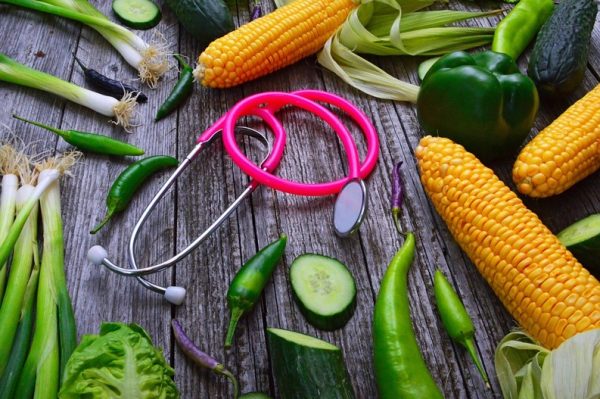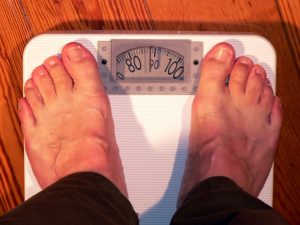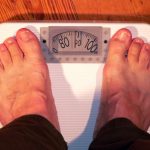
Healthy Eating Plan Helps To Control Weight Gain
Many factors, including consuming more calories than you need from food and beverages, lack of sleep, and low levels of physical activity, may play a part in gaining excess weight. Here are some factors that may influence weight and overall health.
- The world around you. Your home, community, and workplace all may affect how you make daily lifestyle choices. Food and beverages high in fat, added sugar, and calories are easy to find and sometimes hard to avoid. And they often cost less than healthier choices like fruits and vegetables. On top of that, smartphones and other devices may make it easy for you to be less active in your daily routine.
- Families. Overweight and obesity tend to run in families, suggesting that genes may play a role in weight gain. Families also share food preferences and habits that may affect how much, when, and what we eat and drink.
- Medicines. Some medicines, such as steroids, and some drugs for depression and other chronic health problems, may lead to weight gain. Ask your health care professional or pharmacist about whether weight gain is a possible side effect of medicines you are taking and if there are other medicines that can help your health without gaining weight.
- Emotions. Sometimes people snack, eat, or drink more when they feel bored, sad, angry, happy, or stressed—even when they are not hungry. Consider whether it might be your emotions making you want to eat, and try doing something else to help you cope with negative feelings or celebrate your good mood. That can help you feel better and avoid weight gain.
- Lack of sleep. In general, people who get too little sleep tend to weigh more than those who get enough sleep. There are several possible explanations. Sleep-deprived people may be too tired to exercise. They may take in more calories simply because they are awake longer and have more opportunities to eat. Lack of sleep may also disrupt the balance of hormones that control appetite. Researchers have noticed changes in the brains of people who are sleep deprived. These changes may spark a desire for tasty foods.3 Learn more about sleep deprivation and deficiency and strategies for getting enough sleep.
Consuming Healthy Food and Beverages
Being aware of food portion size, the kinds of foods and beverages you consume, and how often you have them may be a step to help you make healthier food choices.
What kinds of foods and drinks should I consume?
Consume more nutrient-rich foods. Nutrients—like vitamins, minerals, and dietary fiber—nourish our bodies by giving them what they need to be healthy. Adults are encouraged to consume some of the following foods and beverages that are rich in nutrients
fruits and vegetables
- whole grains, like oatmeal, whole-grain bread, and brown rice
- beans, peas, unsalted nuts, and seeds
- sliced vegetables or baby carrots with hummus
- fat-free or low-fat milk and milk products
If you’re sensitive to milk and milk products, try substituting
- nondairy soy, almond, rice, or other drinks with added vitamin D and calcium
- lactose-reduced fat-free or low-fat milk
- dark leafy vegetables like collard greens or kale
A display of fresh vegetables, beans, fruit,lean proteins, healthy fats, whole grains, and milk.
Fruit, colorful veggies, beans, fish, and low-fat dairy products are rich sources of nutrients that give our bodies what they need to be healthy.
Consume less of these foods and beverages. Some foods and beverages have many calories but few of the essential nutrients your body needs. Added sugars and solid fats pack a lot of calories into food and beverages but provide a limited amount of healthy nutrients. Salt does not contain calories, but it tends to be in high-calorie foods. Adults should aim to limit foods and drinks such as
- sugar-sweetened drinks and foods
- foods with solid fats like butter, margarine, lard, and shortening
- white bread, rice, and pasta that are made from refined grains
- foods with added salt (sodium)
- whole milk
Easy snack ideas. Instead of sugary, fatty snacks, try
- fat-free or low-fat milk or yogurt
- fresh or canned fruit, without added sugars
- Baking dish with peas, carrots, and rice.
How to follow a healthy eating plan?
These tips may help you stay on track with your plan to eat healthier.
- Reduce the overall calories you consume. If you consume more calories than you use through daily living, exercise, and other activities, it may lead to weight gain. If you consume fewer calories than you use through physical activity, it may lead to weight loss.
- Have healthy snacks on hand. Whether you are at home, at work, or on the go, healthy snacks may help combat hunger and prevent overeating. Look for snacks that are low in added sugar and salt. Your best bets are whole foods—like baby carrots, fresh fruit, or low-fat or fat-free yogurt instead of chips, cakes, or cookies—rather than packaged or processed foods.
- Select a mix of colorful vegetables each day. Choose dark, leafy greens—such as spinach, kale, collards, and mustard greens—and red and orange vegetables such as carrots, sweet potatoes, red peppers, and tomatoes. If you have had kidney stones, be aware that some vegetables, like spinach and sweet potatoes, are high in oxalate, a chemical that combines with calcium in urine to form a common type of kidney stone. So, if you have kidney stones, you may need to watch how much of this you eat. But for others, these are great choices. Eat a rainbow of food colors!
- Choose whole grains more often. Try whole-grain breads and pastas, oatmeal, or brown rice.
- Shift from solid fats to oils. Try cooking with vegetable, olive, canola, or peanut oil instead of solid fats such as butter, stick margarine, shortening, lard, or coconut oil. Choose foods that naturally contain oils, such as seafood and nuts, instead of some meat and poultry. And use salad dressings and spreads that are made with oils rather than solid fats.
- Switch from frying to baking or grilling. Instead of ordering fries when eating out, ask for a side of steamed veggies.
- Limit foods and beverages that are high in sugar and salt. Avoid snack foods high in salt and added sugars; and keep away from sugary soft drinks.
- Read the Nutrition Facts label on packaged foods. The Nutrition Facts label tells you how many calories and servings are in a box, package, or can. The label also shows how many ingredients, such as fat, fiber, sodium, and sugar—including added sugars—are in one serving of food. You can use these facts to make healthy food choices.
Resource: https://www.niddk.nih.gov/syndication/healthy-eating-physical-activity-for-life
Image credit: e by Gábor Adonyi from Pixabay (Free for commercial use)
Author: Sumana Rao | Posted on: July 14, 2021
« Five Simple Stretches to Help Relieve Shoulder Pain Covid-19 Delta Variant Spreading – How to Be Safe? »




















Write a comment